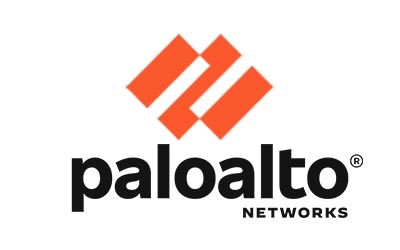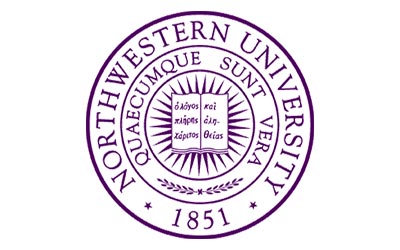











A network device that connects to a router or wired network and transmits a Wi-Fi signal so that wireless devices can connect to a wireless (or Wi-Fi) network.
A protocol that translates a logical address, such as an IP address, to a physical MAC address. The Reverse Address Resolution Protocol (RARP) translates a physical MAC address to a logical address. See also IP address, media access control (MAC) address, and Reverse Address Resolution Protocol (RARP).
A symmetric block cipher based on the Rijndael cipher.
A set of routines, protocols, and tools for building software applications and integrations.
A technique used to prevent unauthorized applications from running on an endpoint. Authorized applications are manually added to a list that is maintained on the endpoint. If an application is not on the whitelist, it cannot run on the endpoint. However, if it is on the whitelist the application can run, regardless of whether vulnerabilities or exploits are present within the application.
A path or tool that an attacker uses to target a network.
The system of record for a given domain. See also Domain Name System (DNS).
A group of contiguous IP address ranges under the control of a single internet entity. Individual autonomous systems are assigned a 16-bit or 32-bit AS number (ASN) that uniquely identifies the network on the internet. ASNs are assigned by the Internet Assigned Numbers Authority (IANA). See also Internet Protocol (IP) address and Internet Assigned Numbers Authority (IANA).
A hypervisor that runs directly on the host computer hardware. Also known as a Type 1 or bare metal hypervisor. See also hypervisor and hosted hypervisor.
A similar network management protocol to Dynamic Host Configuration Protocol (DHC) that is commonly used on Unix and Linux TCP/IP networks.
Contains machine code that is loaded into an endpoint’s memory by firmware during the startup process, before the operating system is loaded.
Targets the boot sector or master boot record (MBR) of an endpoint’s storage drive or other removable storage media. See also boot sector and master boot record (MBR).
Individual endpoints that are infected with advanced malware that enables an attacker to take control of the compromised endpoint. Also known as a zombie. See also botnet and malware.
A network of bots (often tens of thousands or more) working together under the control of attackers using numerous command-and-control (C&C) servers. See also bot.
A wired or wireless network device that extends a network or joins separate network segments.
Closely related to BYOD, BYOA is a policy trend in which organizations permit end users to download, install, and use their own personal apps on mobile devices, primarily smartphones and tablets, for work-related purposes. See also bring your own device (BYOD).
A policy trend in which organizations permit end users to use their own personal devices, primarily smartphones and tablets, for work-related purposes. BYOD relieves organizations from the cost of providing equipment to employees, but creates a management challenge because of the vast number and type of devices that must be supported. See also bring your own apps (BYOA).
A type of high-speed internet access that delivers different upload and download data speeds over a shared network medium. The overall speed varies depending on the network traffic load from all the subscribers on the network segment.
The portion of a network that receives broadcast packets sent from a node in the domain.
The large interconnected electrical system, consisting of generation and transmission facilities (among others), that comprises the “power grid.”
: A LAN topology in which all nodes are connected to a single cable (the backbone) that is terminated on both ends. In the past, bus networks were commonly used for very small networks because they were inexpensive and relatively easy to install, but today bus topologies are rarely used. The cable media has physical limitations (the cable length), the backbone is a single point of failure (a break anywhere on the network affects the entire network), and tracing of a fault in a large network can be extremely difficult. See also local-area network (LAN).
In multitasking operating systems, a subprocess created by a parent process that is currently running on the system.
A network in which a dedicated physical circuit path is established, maintained, and terminated between the sender and receiver across a network for each communications session.
A method for allocating IP addresses and IP routing that replaces classful IP addressing (for example, Class A, B, and C networks) with classless IP addressing. See also Internet Protocol (IP) address.
A network segment on which data packets may collide with each other during transmission.
A computing trend that describes the process that occurs as end users increasingly find personal technology and apps that are more powerful or capable, more convenient, less expensive, quicker to install, and easier to use, than enterprise IT solutions.
The time required for all routers in a network to update their routing tables with the most current routing information about the network.
Defined by HIPAA as a healthcare provider that electronically transmits PHI (such as doctors, clinics, psychologists, dentists, chiropractors, nursing homes, and pharmacies), a health plan (such as a health insurance company, health maintenance organization, company health plan, or government program including Medicare, Medicaid, military and veterans’ healthcare), or a healthcare clearinghouse. See also Health Insurance Portability and Accountability Act (HIPAA) and protected health information (PHI).
Cybersecurity standards defined by NERC to protect the physical and cyber assets necessary to operate the bulk electric system (BES). See also bulk electric system (BES) and North American Electric Reliability Corporation (NERC).
A U.S. regulation that provides an ongoing, voluntary public-private partnership to improve cybersecurity and to strengthen cybersecurity research and development, workforce development and education, and public awareness and preparedness.
A U.S. regulation that enhances information sharing about cybersecurity threats by allowing internet traffic information to be shared between the U.S. government and technology and manufacturing companies.
A checksum used to create a message profile. The CRC is recalculated by the receiving device. If the recalculated CRC doesn’t match the received CRC, the packet is dropped and a request to resend the packet is transmitted back to the device that sent the packet.
A process in which protocol information from the OSI or TCP/IP layer immediately above is wrapped in the data section of the OSI or TCP/IP layer immediately below. Also referred to as data hiding. See also Open Systems Interconnection (OSI) reference model and Transmission Control Protocol/Internet Protocol (TCP/IP) model.
A network device, such as a router or switch, to which an endpoint sends network traffic when a specific destination IP address is not specified by an application or service, or when the endpoint does not know how to reach a specified destination. See also router and switch.
The culture and practice of improved collaboration between application development and IT operations teams.
A type of high-speed internet access that delivers different upload and download data speeds. The overall speed depends on the distance from the home or business location to the provider’s central office (CO).
A type of cyberattack in which extremely high volumes of network traffic such as packets, data, or transactions are sent to the target victim’s network to make their network and systems (such as an e-commerce website or other web application) unavailable or unusable.
An organization that is accredited by a top-level domain (TLD) registry to manage domain name registrations. See also top-level domain (TLD).
A hierarchical distributed database that maps the fully qualified domain name (FQDN) for computers, services, or any resource connected to the internet or a private network to an IP address. See also fully qualified domain name (FQDN).
A software download, typically malware, that happens without a user’s knowledge or permission.
.A network management protocol that dynamically assigns (leases) IP addresses and other network configuration parameters (such as default gateway and Domain Name System [DNS] information) to devices on a network. See also default gateway and Domain Name System (DNS).
A type of file used in Microsoft operating systems that enables multiple programs to simultaneously share programming instructions contained in a single file to perform specific functions.
As defined by HealthIT.gov, an EHR “goes beyond the data collected in the provider’s office and include[s] a more comprehensive patient history. EHR data can be created, managed, and consulted by authorized providers and staff from across more than one healthcare organization.”
As defined by HealthIT.gov, an EMR “contains the standard medical and clinical data gathered in one provider’s office.”
A computing device such as a desktop or laptop computer, handheld scanner, point- of-sale (POS) terminal, printer, satellite radio, security or videoconferencing camera, self- service kiosk, server, smart meter, smart TV, smartphone, tablet, or Voice over Internet Protocol (VoIP) phone. Although endpoints can include servers and network equipment, the term is generally used to describe end user devices.
A term introduced by Andrew McAfee and defined as “the use of emergent social software platforms within companies, or between companies and their partners or customers.” See also Web 2.0.
A Boolean operator in which the output is true only when the inputs are different (for example, TRUE and TRUE equals FALSE, but TRUE and FALSE equals TRUE).
A small piece of software code, part of a malformed data file, or a sequence (string) of commands, that leverages a vulnerability in a system or software, causing unintended or unanticipated behavior in the system or software.
A widely used authentication framework that includes about 40 different authentication methods.
An Internet Engineering Task Force (IETF) open standard that uses the Transport Layer Security (TLS) protocol in Wi-Fi networks and PPP connections. See also Internet Engineering Task Force (IETF), point-to-point protocol (PPP), and Transport Layer Security (TLS).
A programming language specification that defines a set of rules for encoding documents in a human-readable and machine-readable format.
In anti-malware, malware that is incorrectly identified as a legitimate file or application. In intrusion detection, a threat that is incorrectly identified as legitimate traffic. See also false positive.
In anti-malware, a legitimate file or application that is incorrectly identified as malware. In intrusion detection, legitimate traffic that is incorrectly identified as a threat. See also false negative.
A small file containing one or more small icons associated with a particular website or webpage.
A U.S. regulation that further strengthens HIPAA by requiring health insurance exchanges to notify individuals whose personal information has been compromised as the result of a data breach as soon as possible, but no later than 60 days after breach discovery. See also Health Insurance Portability and Accountability Act (HIPAA).
A U.S. law that implements a comprehensive framework to protect information systems used in U.S. federal government agencies. Known as the Federal Information Security Management Act prior to 2014.
Technology that converts electrical data signals to light and delivers constant data speeds in the upload and download directions over a dedicated fiber optic cable medium. Fiber optic technology is much faster and more secure than other types of network technology.
A removable magnetic storage medium commonly used from the mid-1970s until about 2007, when it was largely replaced by removable USB storage devices.
A technique used to monitor the flow of data between devices to ensure that a receiving device, which may not necessarily be operating at the same speed as the transmitting device, doesn’t drop packets.
The complete domain name for a specific computer, service, or resource connected to the internet or a private network.
A European Union (EU) regulation that applies to any organization that does business with EU citizens. It strengthens data protection for EU citizens and addresses the export of personal data outside the EU.
A U.S. law that requires financial institutions to implement privacy and information security policies to safeguard the non-public personal information of clients and consumers. Also known as the Financial Services Modernization Act of 1999.
Term originally used to refer to anyone with highly specialized computing skills, without connoting good or bad purposes. However, common misuse of the term has redefined a hacker as someone that circumvents computer security with malicious intent, such as a cybercriminal, cyberterrorist, or hacktivist.
A cryptographic representation of an entire file or program’s source code.
A U.S. law that defines data privacy and security requirements to protect individuals’ medical records and other personal health information. See also covered entity and protected health information (PHI).
A technique used to facilitate arbitrary code execution by injecting a certain sequence of bytes into the memory of a target process.
A group of four 4-bit hexadecimal digits in a 128-bit IPv6 address. See also Internet Protocol (IP) address.
The first four bits in a 32-bit IPv4 address octet. See also Internet Protocol (IP) address, octet, and low-order bits.
The number of router nodes that a packet must pass through to reach its destination.
A hypervisor that runs within an operating system environment. Also known as a Type 2 hypervisor. See also hypervisor and native hypervisor.
A device used to connect multiple networked devices together on a local-area network (LAN).
An application protocol used to transfer data between web servers and web browsers.
A secure version of HTTP that uses Secure Sockets Layer (SSL) or Transport Layer Security (TLS) encryption. See also Secure Sockets Layer (SSL) and Transport Layer Security (TLS).
Technology that allows multiple, virtual (or guest) operating systems to run concurrently on a single physical host computer.
A network or operating system (OS) artifact that provides a high level of confidence that a computer security incident has occurred.
A cloud computing service model in which customers can provision processing, storage, networks, and other computing resources and deploy and run operating systems and applications. However, the customer has no knowledge of, and does not manage or control, the underlying cloud infrastructure. The customer has control over operating systems, storage, and deployed applications, and some networking components (for example, host firewalls). The company owns the deployed applications and data, and it is therefore responsible for the security of those applications and data.
A random number used only once in a session, in conjunction with an encryption key, to protect data confidentiality. Also known as a nonce.
A data structure used to store information about files and directories in a file-based storage system, but not the filenames or data content itself.
A private, nonprofit U.S. corporation that oversees global IP address allocation, autonomous system (AS) number allocation, root zone management in the Domain Name System (DNS), media types, and other Internet Protocol- related symbols and internet numbers. See also autonomous system (AS) and Domain Name System (DNS).
An open international community of network designers, operators, vendors, and researchers concerned with the evolution of the internet architecture and the smooth operation of the internet.
A 32-bit or 128-bit identifier assigned to a networked device for communications at the Network layer of the OSI model or the Internet layer of the TCP/IP model. See also Open Systems Interconnection (OSI) reference model and Transmission Control Protocol/Internet Protocol (TCP/IP) model.
A private network that provides information and resources – such as a company directory, human resources policies and forms, department or team files, and other internal information – to an organization’s users. Like the internet, an intranet uses the HTTP and/or HTTPS protocols, but access to an intranet is typically restricted to an organization’s internal users. Microsoft SharePoint is a popular example of intranet software. See also Hypertext Transfer Protocol (HTTP) and Hypertext Transfer Protocol Secure (HTTPS).
Hacking an Apple iOS device to gain root-level access to the device. This hacking is sometimes done by end users to allow them to download and install mobile apps without paying for them, from sources, other than the App Store, that are not sanctioned and/or controlled by Apple. Jailbreaking bypasses the security features of the device by replacing the firmware’s operating system with a similar, albeit counterfeit version, which makes the device vulnerable to malware and exploits. See also rooting.
A ticket-based authentication protocol in which “tickets” are used to identify network users.
A network security principle in which only the permission or access rights necessary to perform an authorized task are granted.
The last bit in a 32-bit IPv4 address octet. See also Internet Protocol (IP) address, octet, and most significant bit.
A computer network that connects laptop and desktop computers, servers, printers, and other devices so that applications, databases, files and file storage, and other networked resources can be shared across a relatively small geographic area such as a floor, a building, or a group of buildings.
The last four bits in a 32-bit IPv4 address octet. See also Internet Protocol (IP) address, octet, and high-order bits.
Malicious software or code that typically damages, takes control of, or collects information from an infected endpoint. Malware broadly includes viruses, worms, Trojan horses (including Remote Access Trojans, or RATs), anti-AV, logic bombs, back doors, rootkits, bootkits, spyware, and (to a lesser extent) adware.
The first sector on a computer hard drive, containing information about how the logical partitions (or file systems) are organized on the storage media, and an executable boot loader that starts up the installed operating system.
A unique 48-bit or 64-bit identifier assigned to a network interface controller (NIC) for communications at the Data Link layer of the OSI model. The MAC address is the physical address of a network device. Typically hardcoded by device maker directly onto device in ROM. See also Open Systems Interconnection (OSI) reference model.
A programming technique used to alter malware code with every iteration, to avoid detection by signature-based anti-malware software. Although the malware payload changes with each iteration – for example, by using a different code structure or sequence, or inserting garbage code to change the file size – the fundamental behavior of the malware payload remains unchanged. Metamorphism uses more advanced techniques than polymorphism. See also polymorphism.
A protocol used to authenticate Microsoft Windows-based workstations using a challenge-response mechanism to authenticate PPTP connections without sending passwords. See also point-to-point tunneling protocol (PPTP).
The first bit in a 32-bit IPv4 address octet. See also Internet Protocol (IP) address, octet, and least significant bit.
A program object that allows multiple program threads to share the same resource, such as file access, but not simultaneously.
A U.S. regulation that amends the Homeland Security Act of 2002 to enhance multi-directional sharing of information related to cybersecurity risks and strengthens privacy and civil liberties protections.
A hypervisor that runs directly on the host computer hardware. Also known as a Type 1 or bare metal hypervisor. See also hypervisor and hosted hypervisor.
The collection of services and specifications that provide and manage access to the network hardware.The Network Access layer is the most mysterious and least uniform of TCP/IP's layers. The Network Access layer manages all the services and functions necessary to prepare the data for the physical network.The Network Access layer defines the procedures for interfacing with the network hardware and accessing the transmission medium.
A technique used to virtualize IP addresses by mapping private, non-routable IP addresses assigned to internal network devices to public IP addresses.
A European Union (EU) directive that imposes network and information security requirements for banks, energy companies, healthcare providers and digital service providers, among others.
A not-for-profit international regulatory authority responsible for assuring the reliability of the bulk electric system (BES) in the continental United States, Canada, and the northern portion of Baja California, Mexico. See also bulk electric system (BES) and Critical Infrastructure Protection (CIP).
A programming technique used to render code unreadable. It can be implemented using a simple substitution cipher, such as an exclusive or (XOR) operation, or more sophisticated encryption algorithms, such as the Advanced Encryption Standard (AES). See also Advanced Encryption Standard (AES), exclusive or (XOR), and packer.
A group of 8 bits in a 32-bit IPv4 address. See Internet Protocol (IP) address.
A mathematical function that creates a unique representation (a hash value) of a larger set of data in a manner that is easy to compute in one direction (input to output), but not in the reverse direction (output to input). The hash function can’t recover the original text from the hash value. However, an attacker could attempt to guess what the original text was and see if it produces a matching hash value.
A seven-layer networking model consisting of the Application (Layer 7 or L7), Presentation (Layer 6 or L6), Session (Layer 5 or L5), Transport (Layer 4 or L4), Network (Layer 3 or L3), Data Link (Layer 2 or L2), and Physical (Layer 1 or L1) layers. Defines standard protocols for communication and interoperability using a layered approach in which data is passed from the highest layer (application) downward through each layer to the lowest layer (physical), then transmitted across the network to its destination, then passed upward from the lowest layer to the highest layer. See also data encapsulation.
A standard specification for the transmission bandwidth of digital signals on Synchronous Optical Networking (SONET) fiber optic networks. Optical carrier transmission rates are designated by the integer value of the multiple of the base rate (51.84Mbps). For example, OC-3 designates a 155.52Mbps (3 x 51.84) network and OC-192 designates a 9953.28Mbps (192 x 51.84) network.
A software tool that can be used to obfuscate code by compressing a malware program for delivery, then decompressing it in memory at run time. See also obfuscation.
A traffic intercept of data packets that can be used for analysis.
A network in which devices share bandwidth on communications links to transport packets between a sender and receiver across a network.
An authentication protocol used by PPP to validate users with an unencrypted password. See also point-to-point protocol (PPP).
A proprietary information security standard mandated and administered by the PCI Security Standards Council (SSC), and applicable to any organization that transmits, processes, or stores payment card (such as debit and credit cards) information. See also PCI Security Standards Council (SSC).
A group comprising Visa, MasterCard, American Express, Discover, and JCB that maintains, evolves, and promotes PCI DSS. See also Payment Card Industry Data Security Standards (PCI DSS).
A Canadian privacy law that defines individual rights with respect to the privacy of their personal information, and governs how private sector organizations collect, use, and disclose personal information in the course of business.
Defined by the U.S. National Institute of Standards and Technology (NIST) as “any information about an individual maintained by an agency, including (1) any information that can be used to distinguish or trace an individual’s identity… and (2) any other information that is linked or linkable to an individual….”
A type of attack that redirects a legitimate website’s traffic to a fake site.
A cloud computing service model in which customers can deploy supported applications onto the provider’s cloud infrastructure, but the customer has no knowledge of, and does not manage or control, the underlying cloud infrastructure. The customer has control over the deployed applications and limited configuration settings for the application-hosting environment. The company owns the deployed applications and data, and it is therefore responsible for the security of those applications and data.
A Layer 2 (Data Link) protocol layer used to establish a direct connection between two nodes.
An obsolete method for implementing virtual private networks, with many known security issues, that uses a TCP control channel and a GRE tunnel to encapsulate PPP packets. See also Transmission Control Protocol (TCP), Generic Routing Encapsulation (GRE), and point-to-point protocol (PPP).
A programming technique used to alter a part of malware code with every iteration, to avoid detection by signature-based anti-malware software. For example, an encryption key or decryption routine may change with every iteration, but the malware payload remains unchanged. See also metamorphism.
A network standard that provides electrical power to certain network devices over Ethernet cables.
A shared secret, used in symmetric key cryptography that has been exchanged between two parties communicating over an encrypted channel.
Refers to Ethernet hardware used in computer networking, typically a network interface card (NIC), that receives all traffic on a network segment, even if the traffic is not addressed to the hardware.
Defined by HIPAA as information about an individual’s health status, provision of healthcare, or payment for healthcare that includes identifiers such as names, geographic identifiers (smaller than a state), dates, phone and fax numbers, email addresses, Social Security numbers, medical record numbers, or photographs. See also Health Insurance Portability and Accountability Act (HIPAA).
A self-contained unit of data (consisting of user data or control information and network addressing).
A set of roles, policies, and procedures needed to create, manage, distribute, use, store, and revoke digital certificates and manage public key encryption.
The overall performance of specific applications or services on a network including error rate, bit rate, throughput, transmission delay, availability, jitter, etc. QoS policies can be configured on certain network and security devices to prioritize certain traffic, such as voice or video, over other, less performance-intensive traffic, such as file transfers.
A pre-computed table used to find the original value of a cryptographic hash function.
A DNS query that is performed (if the DNS server allows recursive queries) when a DNS server is not authoritative for a destination domain. The non-authoritative DNS server obtains the IP address of the authoritative DNS server for the destination domain and sends the original DNS request to that server to be resolved. See also Domain Name System (DNS) and authoritative DNS server.
A client-server protocol and software that enables remote access servers to communicate with a central server to authenticate users and authorize access to a system or service.
An inter-process communication (IPC) protocol that enables an application to be run on a different computer or network, rather than on the local computer on which it is installed.
A network device that boosts or retransmits a signal to physically extend the range of a wired or wireless network.
An architectural programming style that typically runs over HTTP, and is commonly used for mobile apps, social networking websites, and mashup tools. See also Hypertext Transfer Protocol (HTTP).
A protocol that translates a physical MAC address to a logical address. See also media access control (MAC) address.
A LAN topology in which all nodes are connected in a closed loop that forms a continuous ring. In a ring topology, all communication travels in a single direction around the ring. Ring topologies were common in token ring networks. See also local-area network (LAN).
The Google Android equivalent of jailbreaking. See jailbreaking.
A network device that sends data packets to a destination network along a network path.
Randomly generated data that is used as an additional input to a one-way hash function that hashes a password or passphrase. The same original text hashed with different salts results in different hash values.
A U.S. law that increases financial governance and accountability in publicly traded companies.
Someone with limited hacking and/or programming skills that uses malicious programs (malware) written by others to attack a computer or network.
A cryptographic protocol for managing authentication and encrypted communication between a client and server to protect the confidentiality and integrity of data exchanged in the session.
A case sensitive, 32-character alphanumeric identifier that uniquely identifies a Wi-Fi network.
A cloud computing service model, defined by the U.S. National Institute of Standards and Technology (NIST), in which “the capability provided to the consumer is to use the provider’s applications running on a cloud infrastructure. The applications are accessible from various client devices through either a thin client interface, such as a web browser, or a program interface. The consumer does not manage or control the underlying cloud infrastructure including network, servers, operating systems, storage, or even individual application capabilities, with the possible exception of limited user-specific application configuration settings.”
A highly targeted phishing attack that uses specific information about the target to make the phishing attempt appear legitimate.
An XML format for conveying data about cybersecurity threats in a standardized format. See also Extensible Markup Language (XML).
A number that hides the network portion of an IPv4 address, leaving only the host portion of the IP address. See also Internet Protocol (IP) address.
A technique used to divide a large network into smaller, multiple subnetworks.
A technique used to aggregate multiple contiguous smaller networks into a larger network to enable more efficient internet routing.
An intelligent hub that forwards data packets only to the port associated with the destination device on a network.
A protocol that transfer multiple digital bit streams synchronously over optical fiber.
A full-duplex digital transmission system that uses multiple pairs of copper wire to transmit electrical signals over a network. For example, a T-1 circuit consists of two pairs of copper wire – one pair transmits, the other pair receives – that are multiplexed to provide a total of 24 channels, each delivering 64Kbps of data, for a total bandwidth of 1.544Mbps.
A protocol data unit (PDU) defined at the Transport layer of the OSI model. See also protocol data unit (PDU) and Open Systems Interconnection (OSI) reference model.
A sequence used to establish a TCP connection. For example, a PC initiates a connection with a server by sending a TCP SYN (Synchronize) packet. The server replies with a SYN ACK packet (Synchronize Acknowledgment). Finally, the PC sends an ACK or SYN-ACK-ACK packet, acknowledging the server’s acknowledgement, and data communication commences. See also Transmission Control Protocol (TCP).
The highest level domain in DNS, represented by the last part of a FQDN (for example, .com or .edu). The most commonly used TLDs are generic top-level domains (gTLD) such as .com, edu, .net, and .org, and country-code top-level domains (ccTLD) such as .ca and .us.
Software that enables anonymous communication over the internet.
A connection-oriented (a direct connection between network devices is established before data segments are transferred) protocol that provides reliable delivery (received segments are acknowledged and retransmission of missing or corrupted segments is requested) of data.
A four-layer networking model consisting of the Application (Layer 4 or L4), Transport (Layer 3 or L3), Internet (Layer 2 or L2), and Network Access (Layer 1 or L1) layers.
The successor to SSL (although it is still commonly referred to as SSL). See also Secure Sockets Layer (SSL).
A protocol data unit (PDU) defined at the Transport layer of the OSI model. See also user datagram protocol (UDP) and Open Systems Interconnection (OSI) reference model.
A unique reference (or address) to an internet resource, such as a webpage.
A connectionless (a direct connection between network devices is not established before datagrams are transferred) protocol that provides best-effort delivery (received datagrams are not acknowledged and missing or corrupted datagrams are not requested) of data.
A technique that enables IP address spaces to be divided into different sizes. See also Internet Protocol (IP) address.
A logical network that is created within a physical local-area network.
Technology that provides voice communication over an Internet Protocol (IP)-based network. Also known as IP telephony.
A bug or flaw that exists in a system or software and creates a security risk.
An attack that compromises websites that are likely to be visited by a targeted victim to deliver malware via a drive-by-download. See also drive-by-download.
A term popularized by Tim O’Reilly and Dale Dougherty unofficially referring to a new era of the World Wide Web, which is characterized by dynamic or user-generated content, interaction, and collaboration, and the growth of social media. See also Enterprise 2.0.
A type of spear phishing attack that is specifically directed at senior executives or other high-profile targets within an organization. See also spear phishing.
A computer network that connects multiple LANs or other WANs across a relatively large geographic area, such as a small city, a region or country, a global enterprise network, or the entire planet (for example, the internet). See also local-area network (LAN).
A network device that connects to a router or wired network and transmits a Wi-Fi signal so that wireless devices can connect to a wireless (or Wi-Fi) network.
wireless repeater:A device that rebroadcasts the wireless signal from a wireless router or AP to extend the range of a Wi-Fi network.
The window of vulnerability that exists from the time a new (unknown) threat is released until security vendors release a signature file or security patch for the threat.
© All rights reserved | USForward